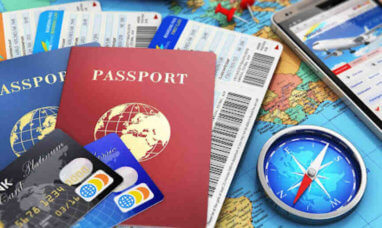If you are shopping for a new travel credit card, you can feel overwhelmed by the number of options available. It can be difficult to find the right deal to meet your travel goals. How do you choose the right one? Here’s how to choose the best travel credit card for you.
1 Decide Between a General or Co-branded Travel Credit Card
When shopping for a travel card, you will have to choose between a general or a co-branded travel card.
You can start by determining how much flexibility you want when redeeming your points.
General travel credit cards are not linked with a specific hotel brand or airline. Instead, you earn rewards that you can use for any travel expenses. You can transfer points to multiple airlines and hotel loyalty programs or use them for direct travel purchases at a fixed rate.
Co-branded travel cards are linked to a specific hotel or airline loyalty program. Rewards on these cards can generally only be redeemed with that airline or hotel. This limits your options, but these cards also give you exclusive perks like free checked bags, priority boarding, free upgrades, annual hotel credits, or automatic hotel elite status. Because co-branded cards allow you to earn points in a specific travel program, they are ideal for travel devotees who already frequently use the same brand.
If you regularly fly on one airline or stay with one hotel group, a co-branded card is a smart way to cover more of your costs. Otherwise, a general travel card will give you much more flexibility.
2 Look at the Rewards
Look at sign-up bonuses. Those are points you earn by placing a certain amount of purchases on the card in the first few months you have it – say, $3,000 spent within three months of opening your card account. A good sign-up bonus could result in a free flight. In general, cards with an annual fee should offer a higher welcome bonus.
When comparing cards, look at how you can earn rewards and how you can redeem them. Some credit cards pay a higher rewards rate on travel spending and a lower base rate on everything else. Other cards pay the same rate on all spending.
Sign-up bonuses aren’t quite as big as ongoing rewards – especially if you plan on keeping your card for the long term – but they’re a fantastic perk. Before signing up, make sure you can reasonably cover the expenses needed to earn the bonus. It wouldn’t be smart to go into heavy debt just to earn a bonus.
When comparing the best rewards credit cards on the market today, it’s easy to get sidetracked by their welcome offers. After all, many travel credit cards offer bonuses worth $1,000 or more in the first few months.
There’s nothing wrong with chasing a big bonus. But you want to earn points that align well with your spending habits if you hope to reap the benefits of the card in the long run. This is where category spending bonuses come in. If you spend a lot in a specific category, it’s wise to consider cards that offer bonus points in that category.
3 Look at the Perks
Next, you’ll want to review cards based on their benefits and protections. The right perks can help offset your card’s annual fee and generate hundreds of dollars of value every year.
Here are some examples of travel perks to look for:
-
-
- Travel delay and accident insurance
- Rental car coverage
- Baggage delay insurance
- Airport lounge membership
- Hotel automatic elite status
- Concierge services
- Emergency assistance
- Free checked bags and priority boarding
- Discounts, upgrades, and various travel credits
-
Decide what benefits and protections are must-haves for you, and make sure the card you choose has those features.
4. Look at Annual Fees and Minimum Spending Requirements
It’s relatively easy to justify the cost of a travel credit card that has an annual fee under $100. After all, many travel credit cards offer welcome bonuses worth $500 or more, and that’s on top of the rewards you earn on your spending. But some credit cards charge a high annual fee for not-that-high rewards. For instance, the American Express Airpoints Platinum Card comes with a $195 annual fee. As the welcome bonus is just $300 bonus airpoints dollars, it might not be worth the cost.
You should know that you don’t have to pay an annual fee at all to get a travel credit card. There are many no-annual-fee credit cards that offer exceptional value.
When it comes to travel cards, it’s also important to know how much the foreign transaction fees are. This fee of around 3% is added to purchases made abroad and can add up if you spend a lot abroad. In this case, a credit card with no foreign transaction fees, even if it comes with an annual fee, could save you more in the long run.
Unfortunately, in order to get the great bonuses offered by travel credit cards, there’s one caveat you need to be prepared for: minimum spending requirement. These can range from $500 to $15,000 or more and must usually be satisfied within three to six months.
While there are ways to temporarily increase your spending, it’s best if you can get the bonus using normal daily spending.
Some cards only require you to make one purchase to activate the welcome bonus offer.
While you shouldn’t necessarily avoid high minimum spend cards as they offer substantial rewards, it’s a good idea to start small as you don’t want to end up with so many cards that you can’t reach the minimum spend. Once you have obtained the card, you cannot request the card again. Only apply for cards for which you can meet the minimum spending requirement to qualify for the welcome bonus.
Managing your ability to meet minimum spending requirements is key because if you spend more money than usual to earn those points, the points are no longer free.
The Best Travel Credit Cards for 2022
Best sign-up bonus: Chase Sapphire Preferred Card
Annual fee: $95
Rewards rate: 1x-5x points
Intro offer: 60,000 points
The Chase Sapphire Preferred card is a great option. The sign-up bonus is impressive for a card with an annual fee of $95.
Best card with annual fees: Chase Sapphire Reserve Card
Annual fee: $550
Rewards rate: 1x-10x points
Intro offer: 50,000 points
With its high $550 annual fee, the Chase Sapphire Reserve Card looks like a luxury card. But avid travelers know better. Rich rewards and generous perks make this card a bargain at $550.
Best for luxury perks: The Platinum Card by American Express
Annual fee: $699
Rewards rate: 1x-3x points
Intro offer: 80,000 points
Luxury perks come at a high cost, but if you’re willing to pay to be treated like a VIP when you travel, the Platinum Card from American Express is worth it.
Best card for beginners: Capital One Venture Rewards Travel Card
Annual fee: $95
Rewards rate: 2x-5x points
Intro offer: 60,000 points
The Capital One Venture Rewards credit card offers simple rewards and flexible redemption.
Best airline credit card: Delta SkyMiles Gold American Express
Annual fee: $0 for the first year, then $99
Rewards rate: 1x-2x points
Intro offer: 75,000 points
With double miles not only on Delta purchases but also on dining and groceries, you can earn rewards quickly with the Delta SkyMiles Gold American Express Card.
Best card with no annual fee: Chase Freedom Flex Card
Annual fee: $0
Rewards rate: 1%-5% cashback
Intro offer: $200
The Chase Freedom Flex Card is technically a cashback card, but the whopping 5% rewards rate for travel booked through Chase also makes it a very good travel card.
Featured Image: Megapixl








